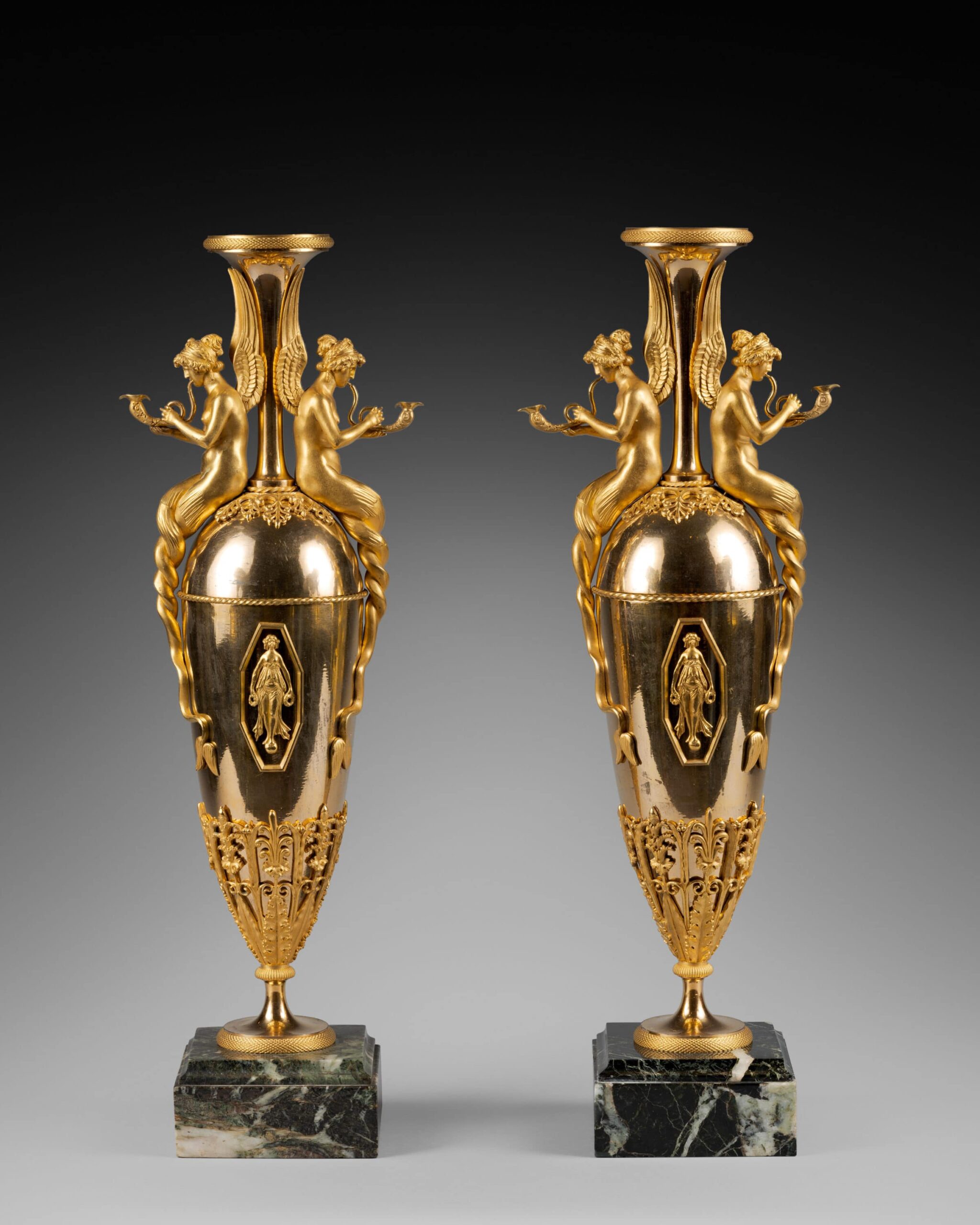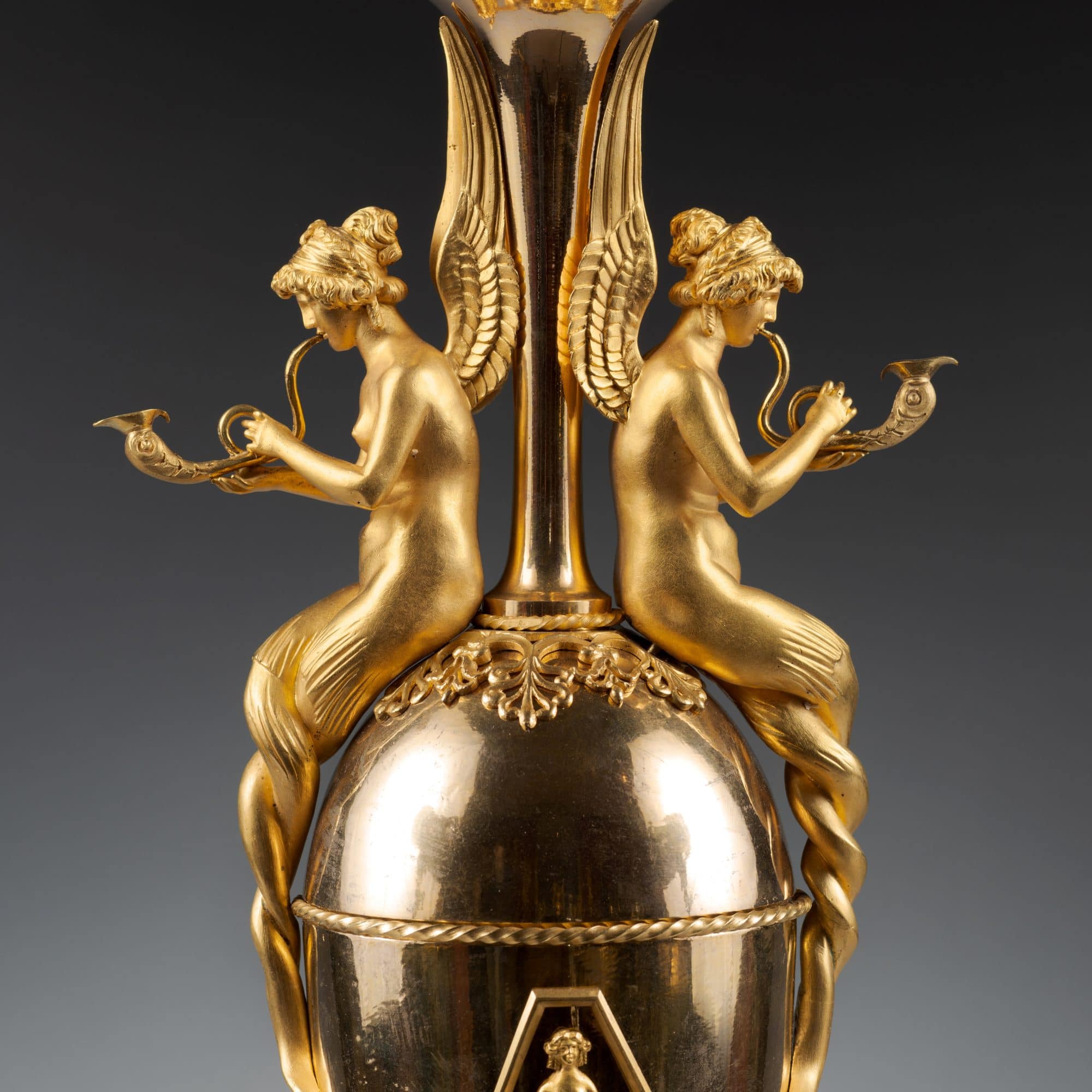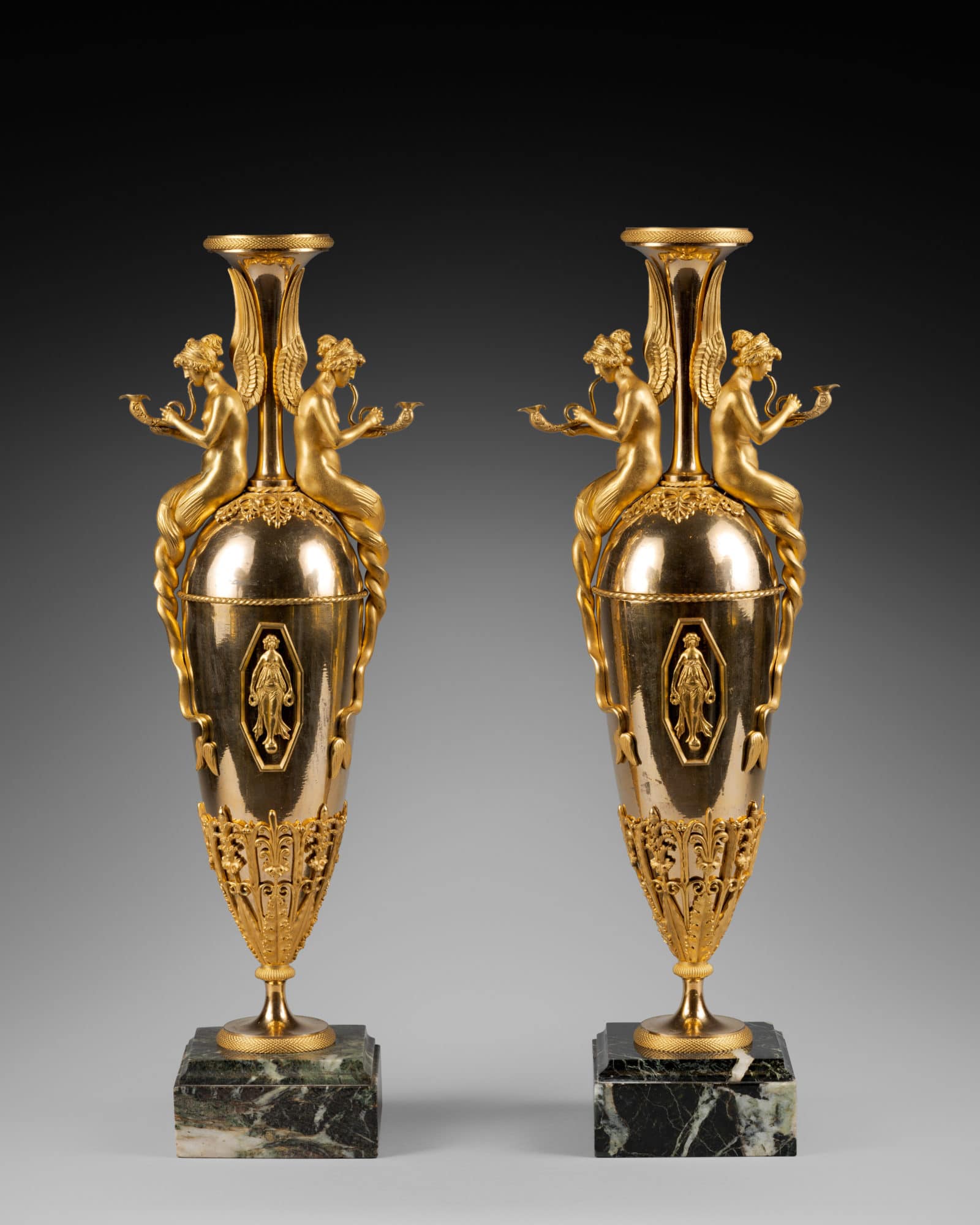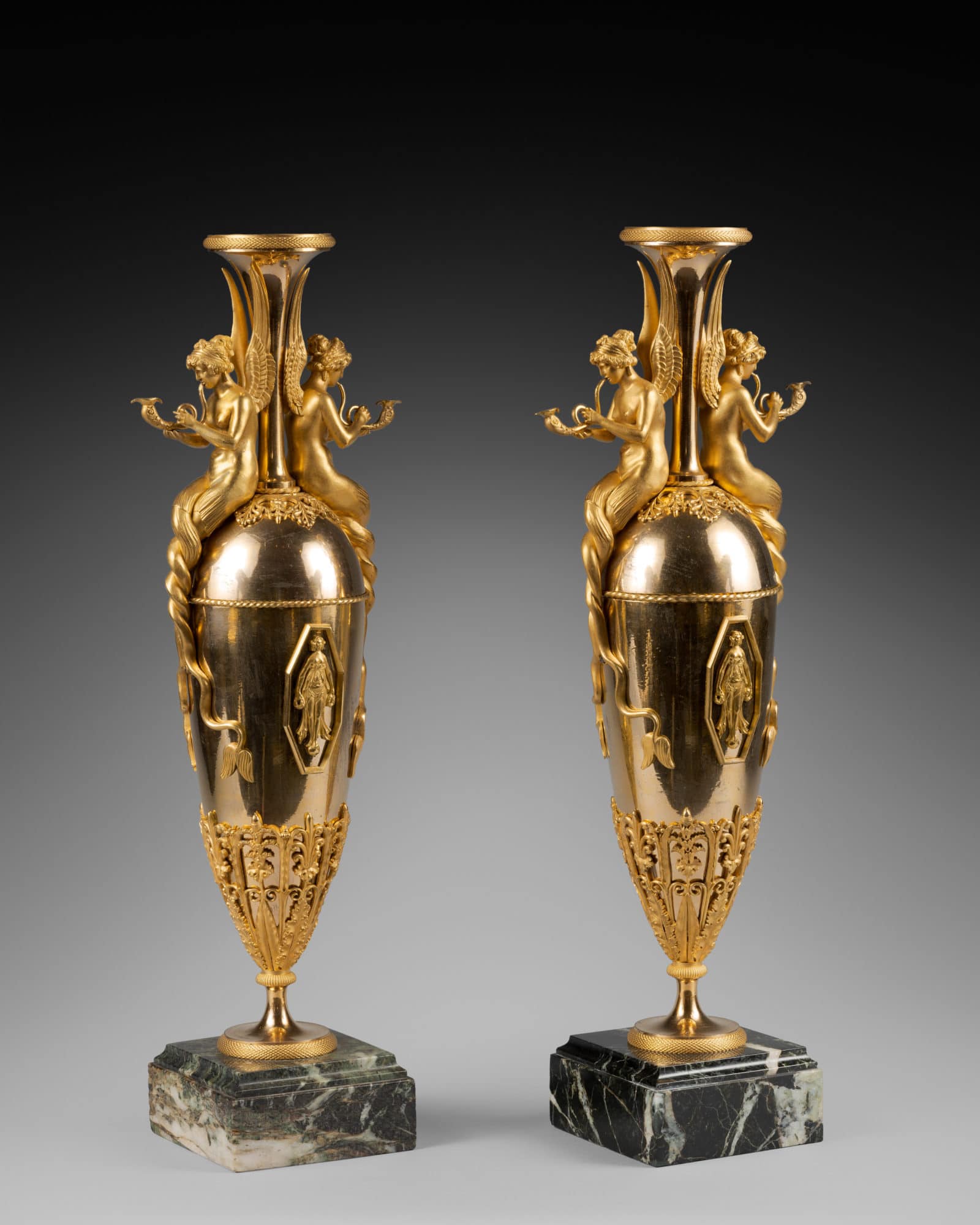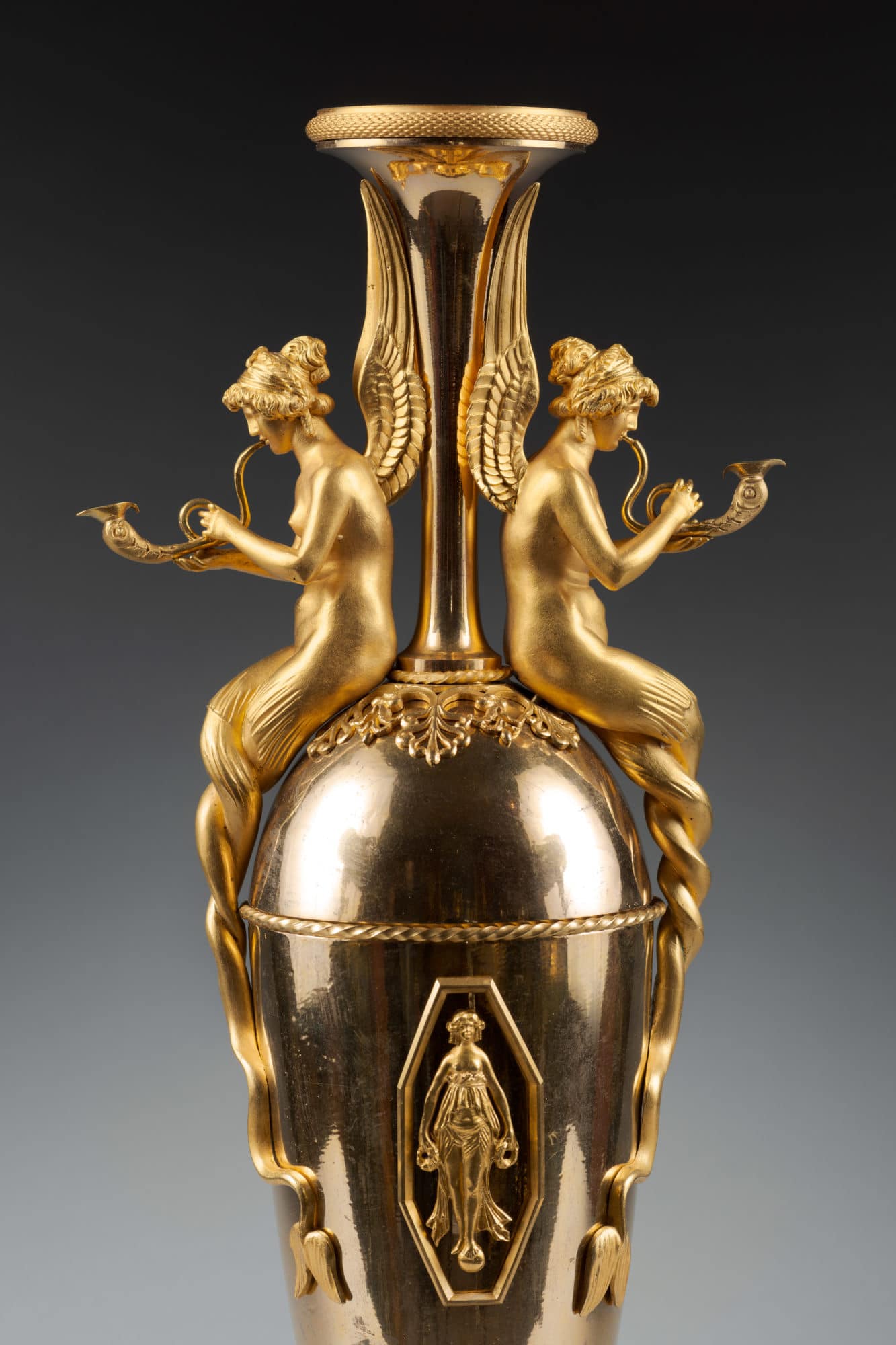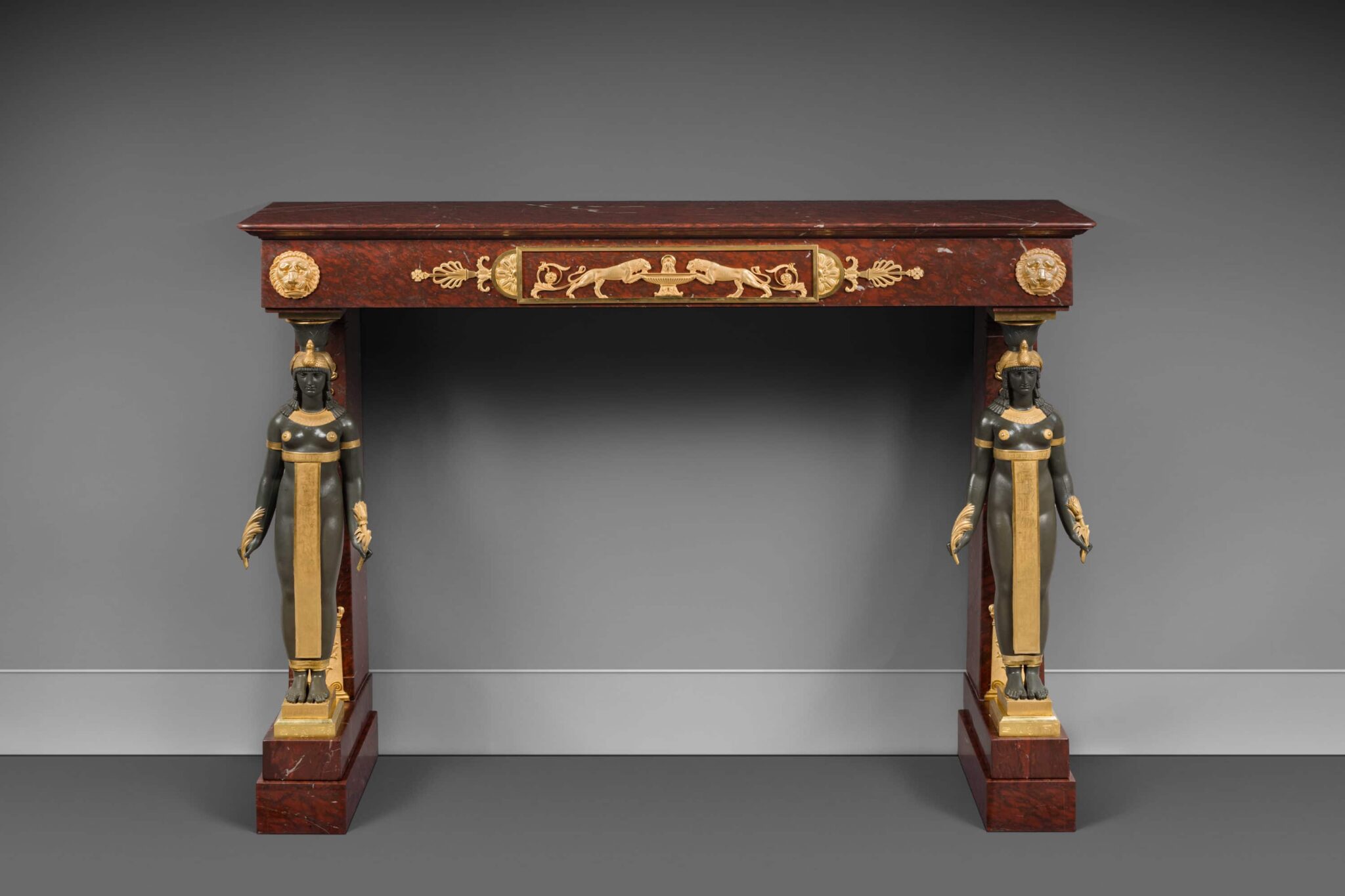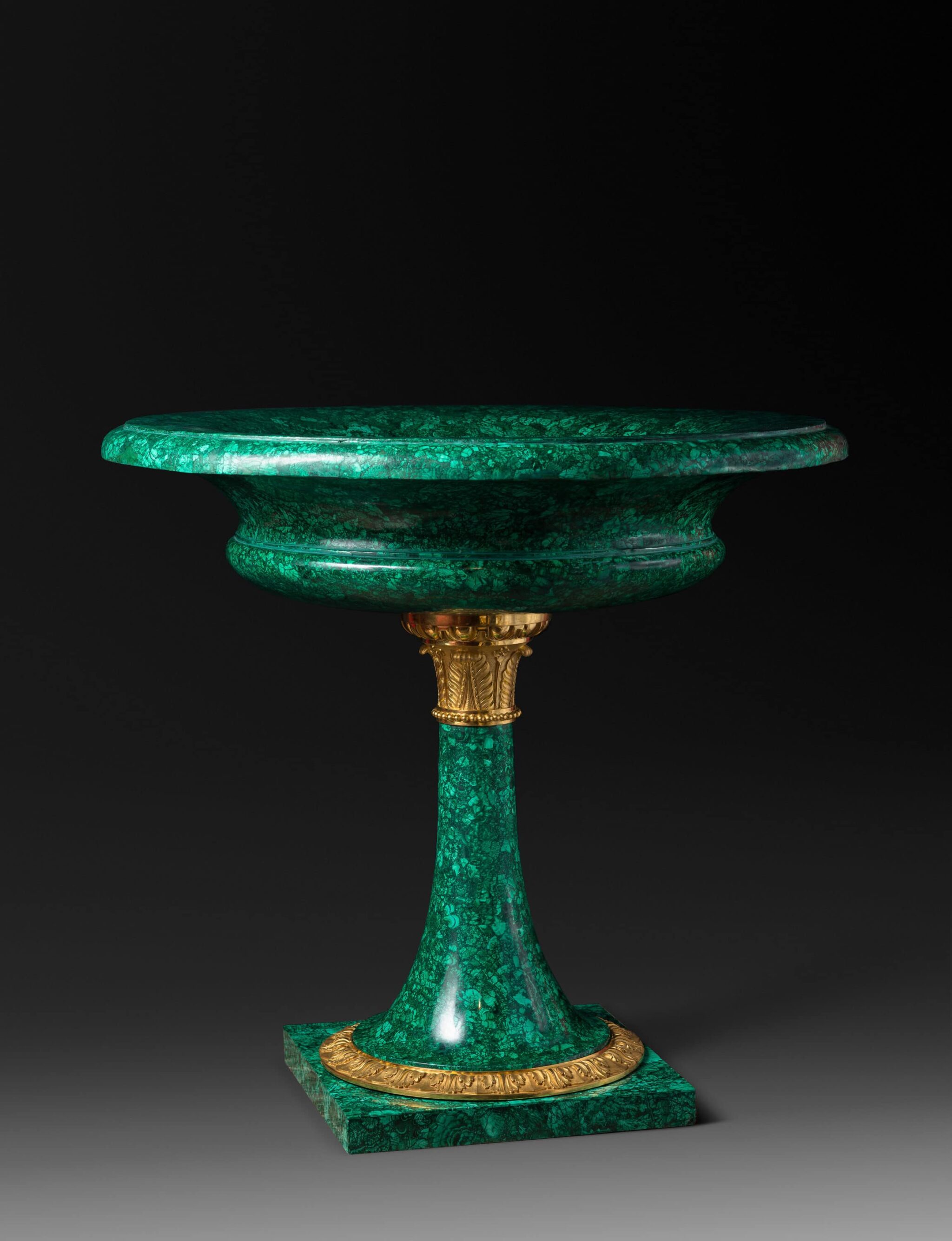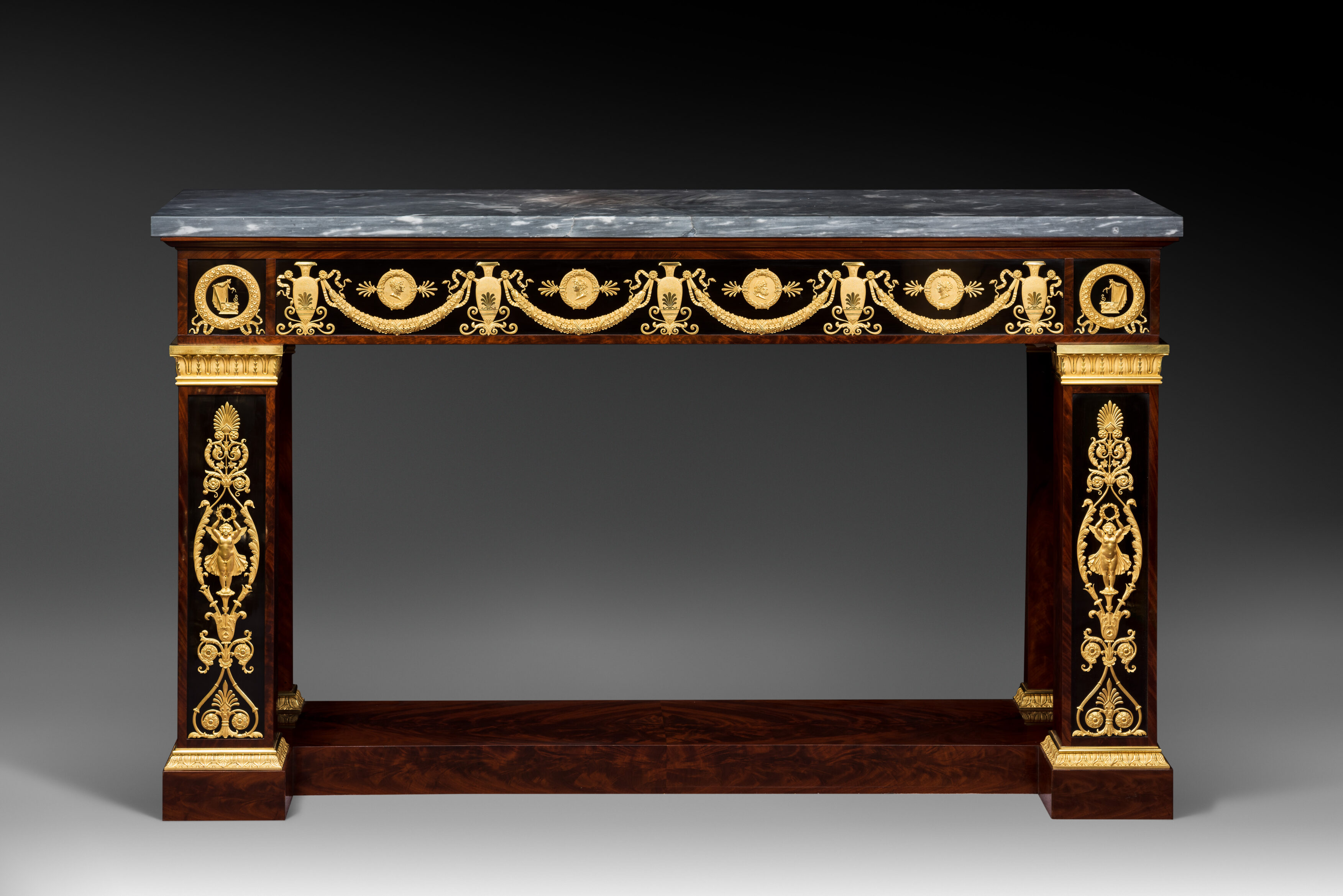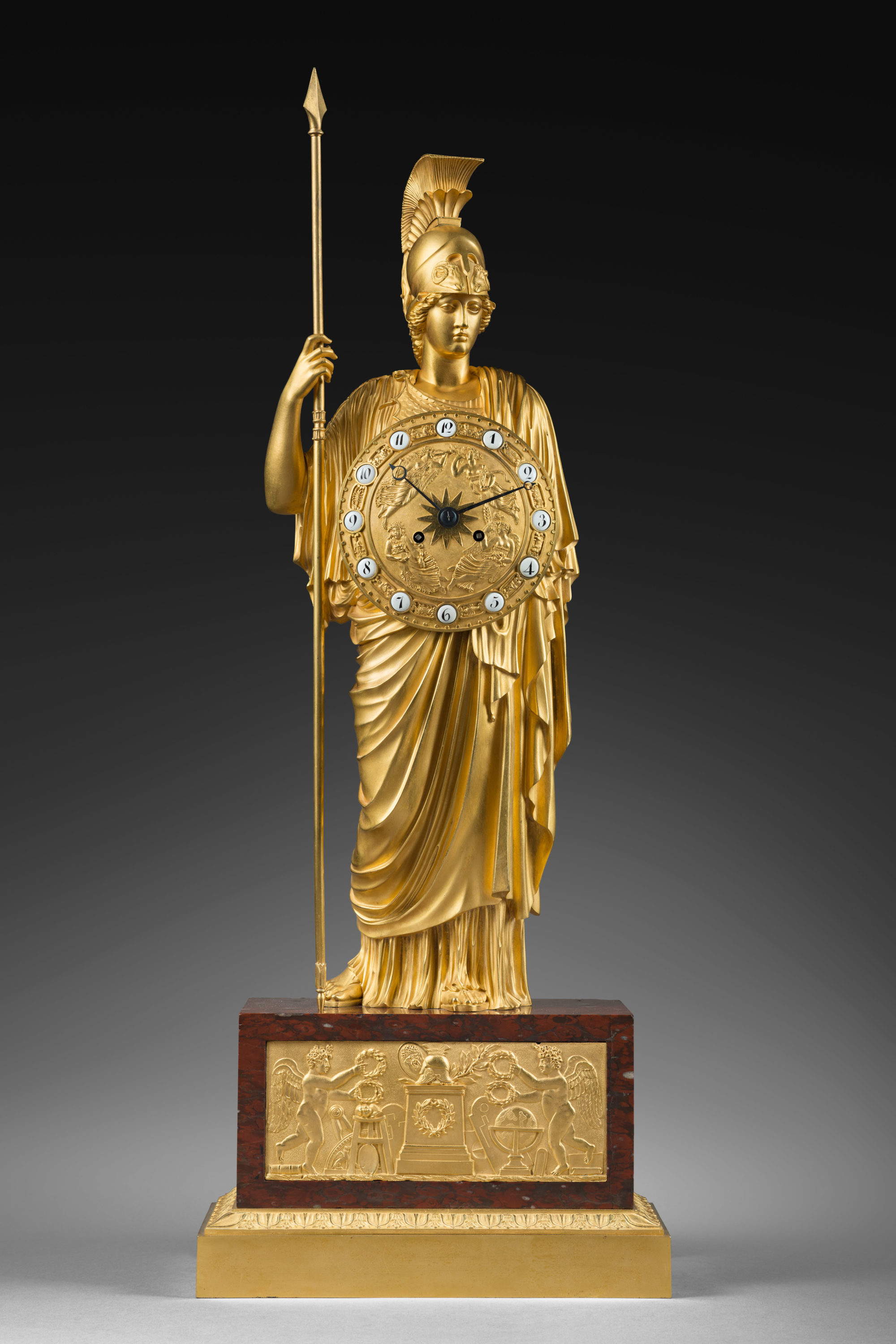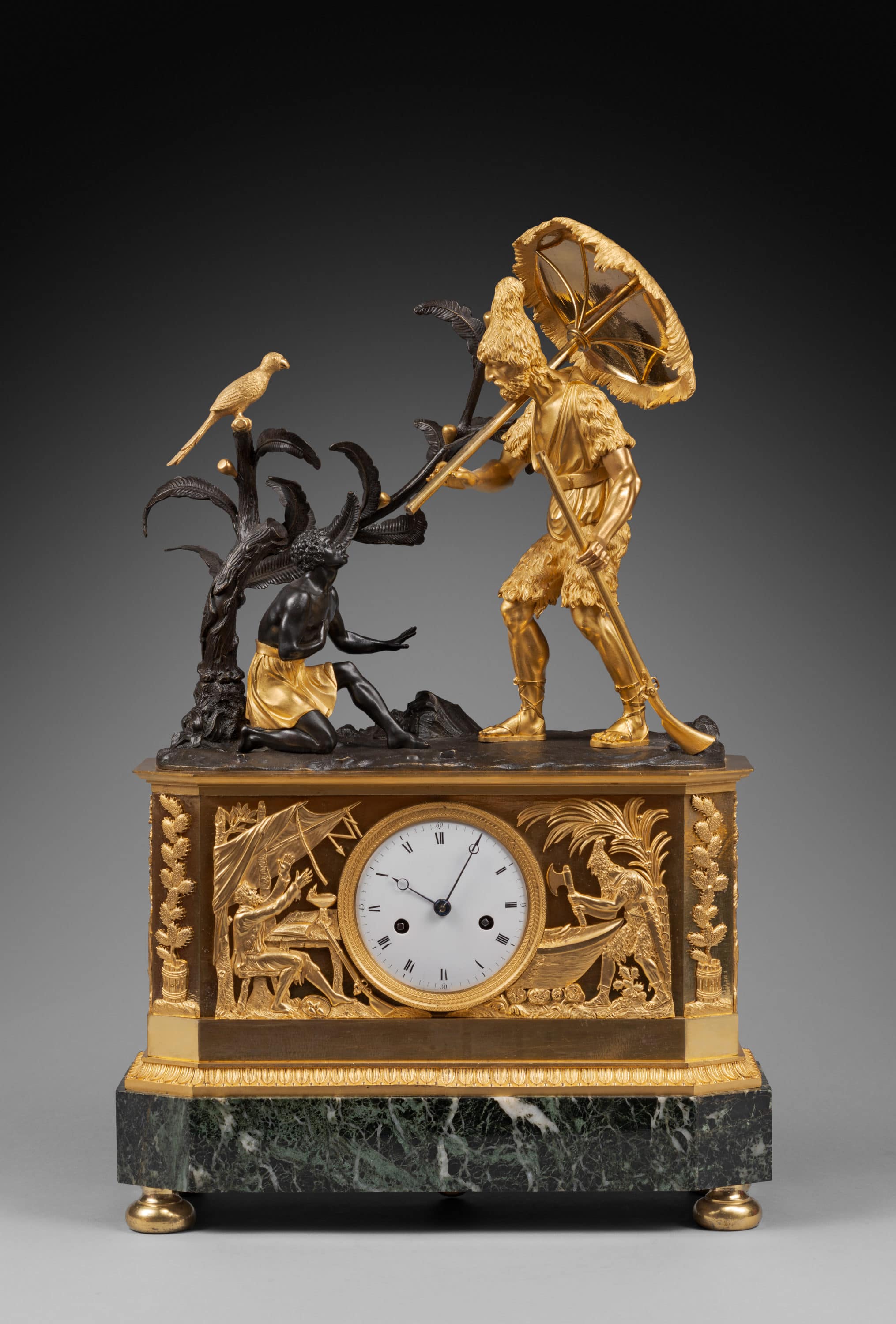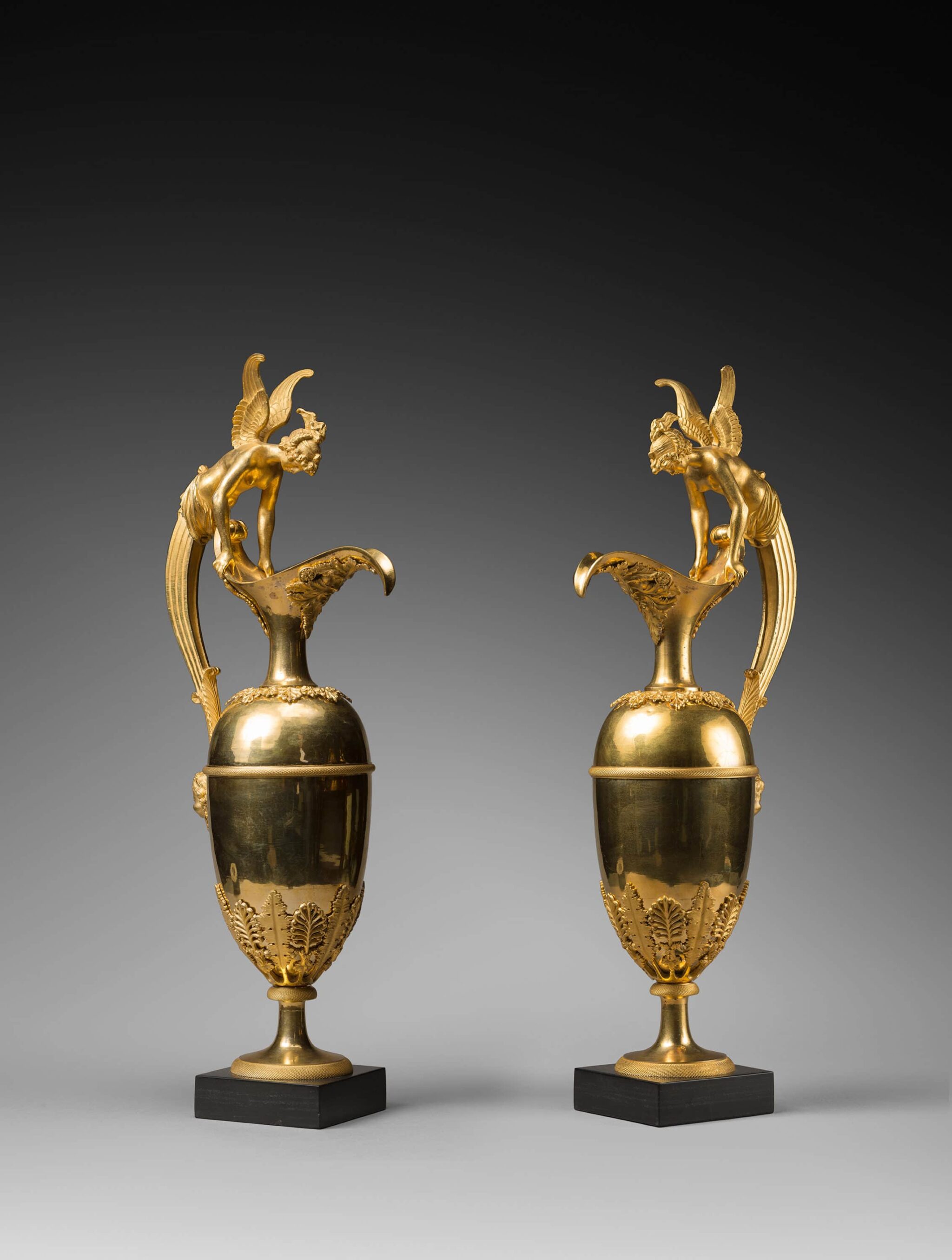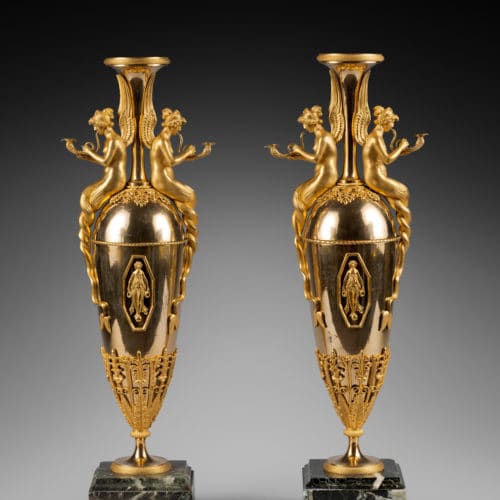Rare Pair of Green Marble and Gilt Bronze Elongated Vases with Matte Finishing
“The Naiads”
The vases, made of finely chased matte gilt bronze, feature bellies that are decorated with applied motifs depicting classically draped female figures holding wreaths in their hands, which are placed within beveled octagonal frames. The handles are in the form of winged naiads that are playing trumpets and whose intertwining tails descend onto the bellies of the vases. The vases’ high sloping necks are decorated with knurled friezes. The bottom portions of the vases are adorned with a bouquet of alternating stylized palmettes and flowers. The spreading bases feature a gadrooned knop and a torus decorated with simulated snake scales. The quadrangular green marble bases are decorated with molding.
The remarkable composition of the present pair of elongated vases, and particularly the treatment of their handles in the form of naiad musicians, support an attribution to Claude Galle, one of the most important Parisian bronziers of the Empire period. Today a small number of identical examples are known, some of which feature variations in the treatment of the bases and the applied motifs on the bellies; most of these are attributed to Galle. One pair attributed to Claude Gall is illustrated in H. Ottomeyer and P. Pröschel, Vergoldete Bronzen, Die Bronzearbeiten des Spätbarock und Klassizismus, Band I, Munich, 1986, p. 365, fig. 5.12.8. A second pair with three-light candelabra was included among the furnishings assembled for the First Consul at the Château de Saint-Cloud in 1802-1803; it is today in the Grand Trianon in the gardens of the Château de Versailles (illustrated in D. Ledoux-Lebard, Inventaire général du Musée national de Versailles et des Trianons, Tome 1, Le Grand Trianon, Meubles et objets d’art, Paris, 1975, p. 62). One further pair of comparable vases, also mounted as candelabra, is on display in the Villa Masséna in Nice (L. Mézin, La Villa Masséna du Premier Empire à la Belle Epoque, Editions d’art Somogy, 2010, p. 54-55, catalogue n° 10).
Claude Galle (1759 - 1815)
One of the foremost bronziers and fondeur-ciseleurs of the late Louis XVI and Empire periods, Claude Galle was born at Villepreux near Versailles. He served his apprenticeship in Paris under the fondeur Pierre Foy, and in 1784 married Foy’s daughter. In 1786 he became a maitre-fondeur. After the death of his father-in-law in 1788, Galle took over his workshop, soon turning it into one the finest, and employing approximately 400 craftsmen. Galle moved to Quai de la Monnaie (later Quai de l’Unité), and then in 1805 to 60 Rue Vivienne.
The Garde-Meuble de la Couronne, under the direction of sculptor Jean Hauré from 1786-88, entrusted him with many commissions. Galle collaborated with many excellent artisans, including Pierre-Philippe Thomire, and furnished the majority of the furnishing bronzes for the Château de Fontainebleau during the Empire. He received many other Imperial commissions, among them light fittings, figural clock cases, and vases for the palaces of Saint-Cloud, the Trianons, the Tuileries, Compiègne, and Rambouillet. He supplied several Italian palaces, such as Monte Cavallo, Rome and Stupinigi near Turin.
In spite of his success, and due in part to his generous and lavish lifestyle, as well as to the failure of certain of his clients (such as the Prince Joseph Bonaparte) to pay what they owed, Galle often found himself in financial difficulty. Galle’s business was continued by his son after his death by his son, Gérard-Jean Galle (1788-1846). Today his work may be found in the world’s most important museums and collections, those mentioned above, as well as the Musée National du Château de Malmaison, the Musée Marmottan in Paris, the Museo de Reloges at Jerez de la Frontera, the Residenz in Munich, and the Victoria and Albert Museum in London.
Discover our entire collection of rare clocks on La Pendulerie Paris.
